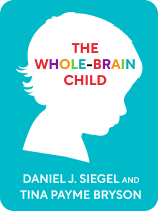

This article is an excerpt from the Shortform book guide to "The Whole-Brain Child" by Daniel J. Siegel and Tina Payne Bryson. Shortform has the world's best summaries and analyses of books you should be reading.
Like this article? Sign up for a free trial here .
What is the wheel of awareness? How can it help you manage your attention and maintain internal balance?
There are many parts of you—thoughts, feelings, dreams, body sensations, etc. The wheel of awareness is a framework for integrating all these different aspects of yourself to maintain mental and emotional equilibrium.
Keep reading for more about the wheel of awareness.
The Wheel of Awareness
In addition to integrating memories and different regions of your brain, integrating the various parts of who you are helps you remain calm and in control of your thoughts and emotions. There are many parts of you—including parent, employee, and mentor. There are probably parts of you that are insecure, and other parts that are self-assured. The wheel of awareness helps you to see yourself as a multifaceted person, preventing you from fixating on only one part.
Think of all your parts as spokes on a wheel, and your self-awareness of your various parts is the hub in the center. On the rim of this wheel of awareness are all the things that can grab your attention—such as feelings, thoughts, memories, physical sensations, goals, dreams, and perceptions of the world around you
When you’re in your hub, you can acknowledge all the different aspects of yourself and all the various things that you can give your attention to in any given moment—such as the mild ache in your back, your lunch options, the memory of last weekend’s camping trip, and anxiety about your upcoming work presentation. If you put all of your attention on one thing, you can become stuck on that rim point, and that one thing determines your state of mind until you change your focus. For example, if you focus entirely on your work presentation, anxiety will consume you.
If you’re stuck on the rim, you may begin to neglect your other rim points and think that just one rim point defines you; in other words, when you’re stuck on a rim point, you confuse how you feel with who you are. For example, if you focus on your presentation and feeling anxious, then you begin to think that you are an anxious person.
By contrast, from your hub, you clearly see that each rim point is just a part of your experience—meaning that your anxiety can coexist with your hunger and the ache in your back. Self-integration entails recognizing all of your spokes and rim points and putting them into perspective as parts of a whole.
Choose Where You Focus Your Attention
The wheel of awareness gives you the power to choose where to put your attention, thus determining your mood and state of mind. Understanding how and why you feel the way you do is half of “mindsight,” which is the foundation of good mental health. (The other half of mindsight how someone else feels and why, which we’ll talk about in the next chapter.)
Improving your mindsight requires you to frequently pause and reflect on how you’re feeling, what you’re focusing on, and which rim points deserve your attention. The more you practice, the more adept you’ll become at focusing your attention, which allows you to choose how you experience things. Rather than being subject to external forces, you become an active participant.
For example, Josh was a high-achieving child who focused on anxiety-inducing rim points, including his fear of getting a B on a test and his worry that he’d botch his solo in the upcoming music performance. When Josh identified other rim points—such as his confidence as a baseball player—it reminded him that there was more to him than his grades and his music performance. With this perspective, he still felt some anxiety about his grade and his solo, but it only represented part of his experience.

———End of Preview———
Like what you just read? Read the rest of the world's best book summary and analysis of Daniel J. Siegel and Tina Payne Bryson's "The Whole-Brain Child" at Shortform .
Here's what you'll find in our full The Whole-Brain Child summary :
- How to increase your child's self-awareness and emotional control
- Why the logical and emotional sides of the brain have to work together
- How to figure out why your child is afraid of something






